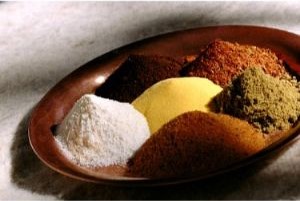What is Ayurveda
Ayurvedic Medicine, also known as Ayurveda, is one of the oldest complete medical systems that originated in India and is a form of healing and therapy. Ayurveda means “science” or “wisdom” of life. Ayurvedic medicine continues to be practiced in India today and is used exclusively by the majority of its population. It is a holistic medical system which balances the body, the mind, and the spirit taking into consideration the world around us.
In many ways, it is similar to traditional chinese medicine. The fundamental belief of Ayurvedic Medicine is that everything in the universe is comprised of energy or “prana”. Energy is responsible for every interaction that occurs. Our body’s functioning, our thoughts, the foods we eat all interrelate with this energy. Ayurvedic believes that everyone’s energy is different and requires different things to bring their body, mind and spirit back into balance.
Ayurvedic feels disease is triggered by many external factors from the world around us and how we live (our daily habits); an imbalance of the doshas; and an imbalance of the mind. In order to heal, one must have an open mind and a desire to heal. It also encompasses the belief that the universe is made up of opposite forces, dry and moist, hot and cold, hard and soft, similar to the chinese with yin and yang and chi energy.
Ayurveda Therapy
Ayurvedic Medicines uses constitution (prakriti), the five basic elements, and life forces (doshas) as its foundation. The constitution or prakriti pertains to an individuals makeup and their ability to maintain their health and how quickly or slowly they recover from an illness or disease. It is believed that the constitution of a person remains the same throughout their life. The five basic elements are ether/space, air, fire, water, and earth. These five basic elements along with all that exists in the universe combine to form the three life forces, metabolic types, or ayurveda body types known as doshas. As you grow, these doshas or bio-energies can become imbalanced. Imbalances of the dosha are due to age, lifestyle, diet, exercise, the seasons, chemicals, toxins, and germs to name a few. The three doshas are characterized by vata, pitta, and kapha.

Ayurvedic Medicine Body Types
Characteristics of the Doshas
Vata
Vata is said to be a combination of ether/space and air. It is also associated with the season autumn and the color blue. Vata is known as the driving force of the body. It relates to the nervous system and the body’s energy. Vatas tend to have anxiety, neurological, muscular and arthritis / rheumatic problems and tend toward constipation. Vatas can be described as always changing and being somewhat unpredictable. They can be moody, enthusiastic, imaginative and impulsive. Usually, they are slender with prominent features. They run on highs and lows especially where their sex drive, energy levels and eating habits are concerned.
Pita
Pita is said to be a combination of fire and water. It is associated with the season summer and the color red. Pita is known for its relationship to the metabolism, digestion, enzymes and bile. Pitas tend toward inflammatory conditions, stomach problems, hives, rashes, acne, bile duct disorders, diarrhea, and conjunctivitis. They are described as predictable, although they may tend towards a rather bad temper. They are usually of medium build, strength and endurance. It is easy for them to maintain their weight and are often of fair complexion.
Kapha
Kapha is said to be a combination of water and earth. It is associated with the season winter and the color yellow. Kapha is known for its relationship to the respiratory system. Kaphas tend toward colds, hay fever, coughs, congestion, sneezing, sinus disorders. They are described as being heavy and strong and tend to weight more than desired. Also , they are slow. They speak slowly often sounding monotone, they eat slow and sleep deep and are ambitious and passionate. Spring is a combination of kapha and pitta.
It is important to note that each individual is a combination of the above 3 dosha types. Each individual will usually display a dominate dosha type. It is very common for an individual to be made up of 2 doshas and rarer to be a combination of all 3.
Seven Tissues
The body is also comprised of tissue. When there is an imbalance in the dosha an imbalance in the tissue occurs. Each of these seven tissues derive energy from each other. When one is compromised the others become compromised. The seven Ayurvedic tissues are plasma (rasa), blood (raktha), muscle (mamsa), fat (madas), bone (asthi), marrow and nerves (majja) and reproductive tissues (shukra).
Digestion and Elimination
Ayurveda believes good digestion and elimination are keys in maintaining good health. The term “ama” is used to describe a toxic substance produced from poor digestion. Making sure everything throughout the body is working effectively is referred to as “agni”. Ayurveda believes that ama results when agni occurs. Agni occurs when the doshas becomes imbalanced or we develop unhealthy lifestyles and diet.
“Mala” is the term they use to describe elimination which is also very important in Ayurveda. Our bodies eliminate through the feces, the urine, and sweat. If any of these channels becomes blocked, toxic materials accumulate within the body. It is these toxic materials that can cause disease. You can see why digestion and elimination are very important to ones health.
Balancing the body, mind, and spirit
In Ayurveda, disease is managed by cleansing and detoxifying, palliation, rejuvenation, and mental hygiene.
Cleansing and Detoxifying
The body is known as “shodana” and is their first step in Ayurvedic Medicine. Remember, we have three avenues of elimination, feces, urine and sweat. Ayurveda uses purwakarma and panchakarma.
Purwakarma is performed through massage and involves herbal oils that promote the elimination of toxins. It is also permed with the use of oils with steam baths to promote eliminating toxins through the skin.
Panchakarma is a more intense form of detoxification and can involve many steps. Please keep in mind that not all five steps are usually needed. The five steps are oil enema therapy (nirhua vasti), herbal enemas (anuvasana vasti), herbal laxative therapy (vireka), therapeutic vomiting (vamana), and herbal inhalation therapy (nasya).
Palliation
This is more commonly known as Shaman, is often used to balance the doshas. Shaman’s focus on a spiritual platform of healing. It often combines herbs, fasting, chanting, yoga stretches, deep breathing exercises, and meditation.
Rejuvenation
The portion of the process that deals with enhancing the body’s inherent ability to heal and function. Think of it as a check up or a process to tone the body! During this phase herbal remedies are to restore balance to the doshas. They usually use a group of herbs and recommend changes in lifestyle and diet. In Ayurveda it is important to remember that there is not one diet, a diet is as individual as you are.
Mental Hygiene
This is the portion which allows the release of psychology stress and emotional distress. It also helps to unlock unconscious negative beliefs. This portion would combine sound therapy, focusing on certain shapes, meditation, and sometimes working with gems, metals and crystals. After experiencing this portion the hope is that you will look at things with fresh eyes.
Health Benefits of Ayurvedic Medicine
Focusing on balancing the body, mind and spirit, Ayurveda offers many health benefits. Its focus is on mental hygiene where it is encouraged to love and respect your body as well as becoming comfortable with your position in life. This also helps you relieve your stress. It also opens up the flow of energy and cellular energy giving you an overall feeling of well-being. It’s focus on cleansing helps your body release toxins and improve your digestion. One thing is for sure. Ayurvedic medicine has stood the test of time. After studying both holistic approaches to medicine, it is apparent we function as a complex being, no one part or thought is independent of the other nor independent of its surroundings.
My favorite ayurvedic herbal company is Himalaya not only because I am a retailer, I also use their products and I just love them! If you haven’t seen our SOQI Wellness Products you can also add those to your wellness routine to promote circulation, vitality, and rejuvenation.
